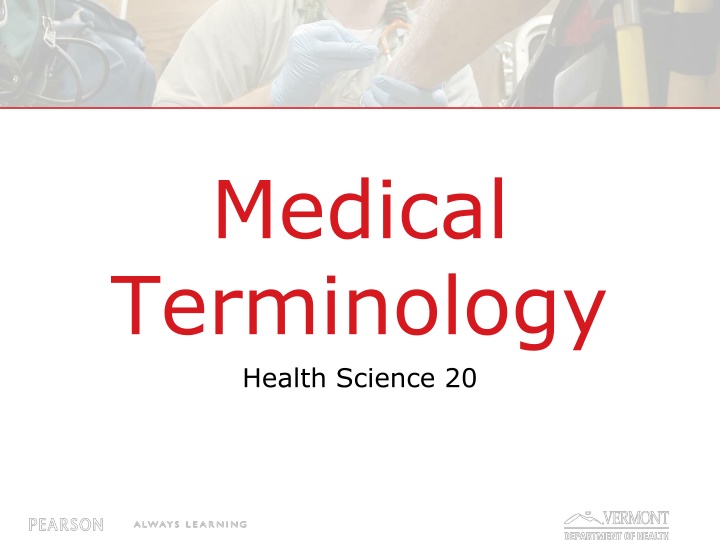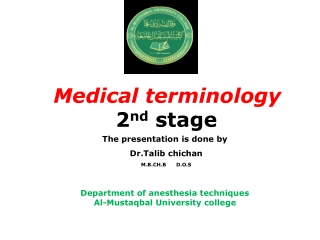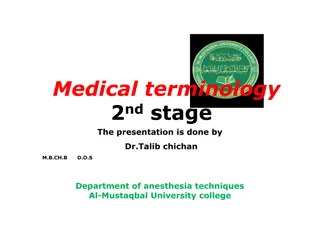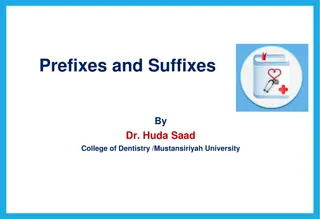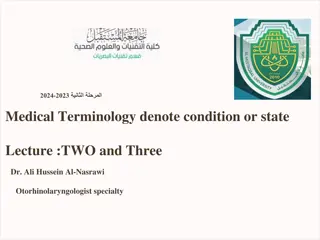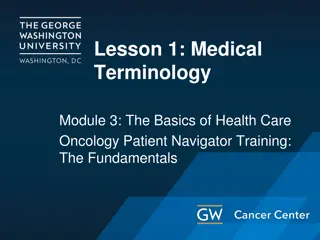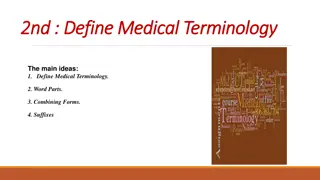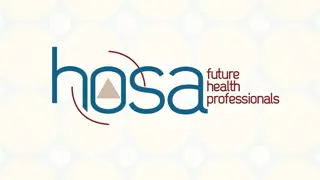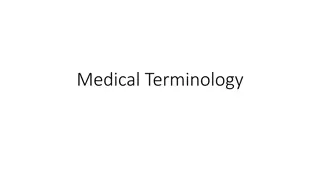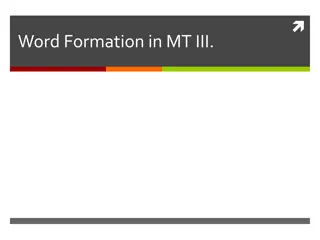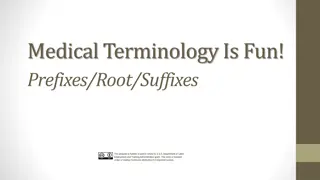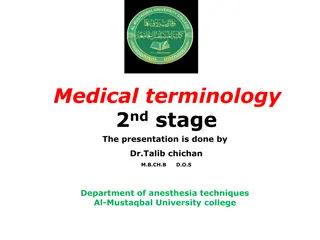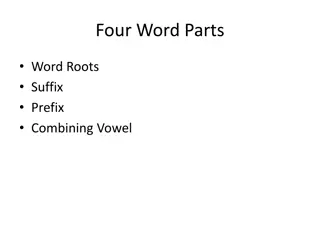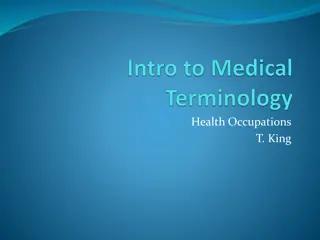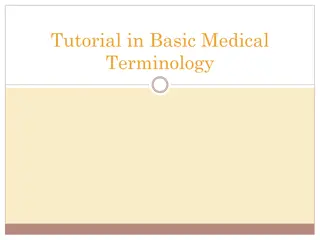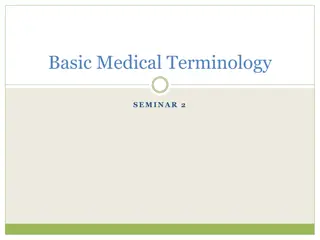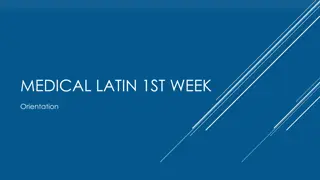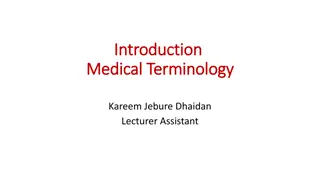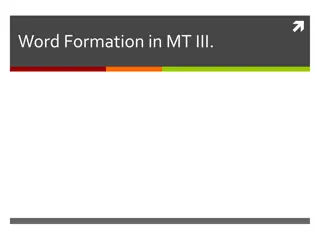Medical Terminology Health Science 20
Medical terminology is a specialized language used in healthcare to describe medical concepts concisely. It consists of prefixes, root words, and suffixes, which can be broken down to define complex terms. Utilizing proper medical terminology enhances communication among healthcare professionals and streamlines the exchange of information. This structured system aids in defining terms by interpreting the suffix, prefix, and root word(s) in sequence. Abbreviations and symbols are also commonly used to convey medical information efficiently. Practice exercises further reinforce knowledge of medical prefixes, suffixes, and root words.
Download Presentation

Please find below an Image/Link to download the presentation.
The content on the website is provided AS IS for your information and personal use only. It may not be sold, licensed, or shared on other websites without obtaining consent from the author.If you encounter any issues during the download, it is possible that the publisher has removed the file from their server.
You are allowed to download the files provided on this website for personal or commercial use, subject to the condition that they are used lawfully. All files are the property of their respective owners.
The content on the website is provided AS IS for your information and personal use only. It may not be sold, licensed, or shared on other websites without obtaining consent from the author.
E N D
Presentation Transcript
Medical Terminology Health Science 20
Introduction Medical terminology is the language of health care. Medical terminology is much more concise than normal English for describing things of a medical nature. By understanding terms, components, even complex words, can be broken down.
Use proper medical terminology to communicate with other health care professionals.
Structure of Medical Terms Three basic components Prefix Root word(s) Suffix
How to Define Medical Terms Terms can easily be defined by determining the meaning of their parts. Read left to right, but define by interpreting the suffix, then the prefix, then the root word(s). ex. hyperglycemia prefix hyper- (above or excessive) root word glyc/o (sugar) suffix emia (blood condition) -
Figure 6-2 Sometimes it will be more convenient to use an accepted medical abbreviation or symbol in your report instead of writing the entire term.
Practice Which of the following is a root word? A. anti- B. hepat- C. -itis D. -emia
Practice (continued) The prefix tachy- means: A. above B. outside C. fast D. higher
Practice (continued) If a patient is complaining of dyspnea, he has what condition? A. chest pain B. stomach ache C. nausea D. trouble breathing
Practice (continued) What is the common prefix meaning alongside ? A. peri- B. poly- C. para- D. post-
Practice (continued) The suffix -logy refers to: A. study of B. occurring after C. within D. pertaining to
Practice (continued) The term for blood in the urine would be: A. diarrhea B. rhinorrhea C. hematuria D. hematemesis
Practice (continued) h c g b j a f d i ______ 1. Arthritis ______ 2. Myodynia ______ 3. Hepatomegaly ______ 4. Apnea ______ 5. Hematuria ______ 6. Dysuria ______ 7. Hysterectomy ______ 8. Osteomalacia ______ 9. Aphasia ______10. Otorrhea e a. difficult or painful urination b. absence of breathing c. pain in a muscle d. softening of the bone e. discharge from the ear f. surgical removal of the uterus g. enlargement of the liver h. inflammation of a joint i. loss of speech j. blood in the urine
Summary The proper use of medical terminology will help ensure clarity in the sharing of information regarding the patient.
